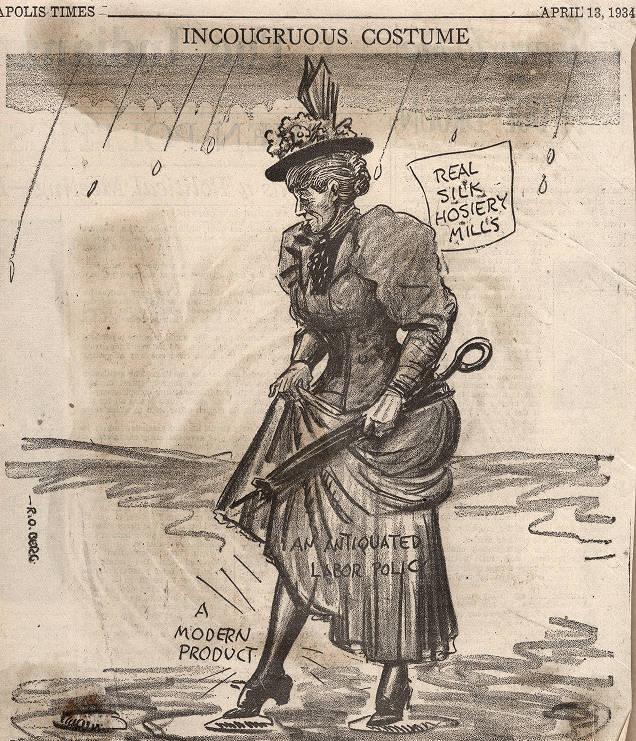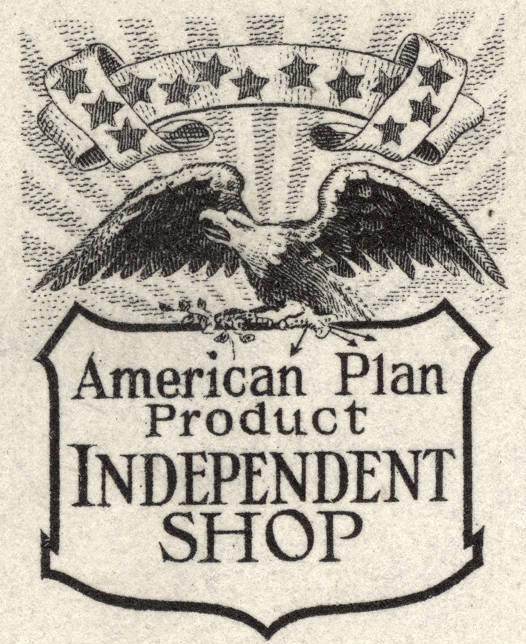In one of the earliest documented labor struggles in Indianapolis, members of the typographical union went on strike in 1863 after failing to secure a 20-percent wage increase from the publishers of the . The paper dismissed union workers and promptly advertised for new employees, announcing, “no member of a typographical union need apply.” The next year, the Blacksmiths and Machinists Union went on strike over wage issues.

Indianapolis experienced the first tremors of national labor disputes in the late 1860s. Local foundries shut down in 1866 during a nationwide dispute between the Iron Molders Union and foundry owners. Union members accused owners of locking out workers in an effort to destroy the union, while owners insisted that the union was on strike over wage issues.
During the 1870s, Indiana and Indianapolis faced the most serious threats to labor peace and stability when workers shut down railroad lines. In the midst of the Panic of 1873, the cut wages by 10 percent, precipitating a general strike that became the largest strike in the nation to that date. Beginning in the East and making its way west to Indiana, the strike affected most of the rail lines passing through Indianapolis.
While there were many strikers and sympathizers in the capital city, there was surprisingly little violence. The relative calm of Indianapolis allowed Governor to use the city as a staging area from which he dispatched the to trouble spots. On December 27, 1873, Hendricks ordered 66 militiamen under the command of General to depart from the Massachusetts Avenue train station for Logansport to deal with striking rail workers. The criticized the governor for not taking more drastic action, especially in Indianapolis where transportation was seriously impeded.
The national railroad strike in the summer of 1877 was larger and more serious. Despite the absence of significant disorders, rail owners convinced Judge of the Seventh District Court to ask President Rutherford B. Hayes to dispatch 200 U.S. Army regulars to Indianapolis to control striking rail workers. Rail workers ended their strikes by early August and returned to work without a wage increase, all before the arrival of the federal troops. This marked the first strike in Indiana in which regular army troops were authorized for use against citizens in a labor dispute.
The early 20th century witnessed an increase in labor violence. Indianapolis’ first known strike-related bombing occurred during a construction workers’ strike in September 1909. Union ironworkers set off two charges of dynamite against iron supporting columns of a four-story bunker under construction at the Citizens Gas Company plant, near Prospect Street. The attack was a retaliation against the use of subcontracted nonunion labor, but the damage amounted to but a few hundred dollars. Construction of City Hall and Murat Temple also was interrupted during the strikes.
In April 1911, John J. McNamara, secretary-treasurer of the Bridge and Structural Iron Workers Union, was arrested at the union’s international headquarters on Monument Circle and extradited to California to stand trial with his brother for dynamiting the building in Los Angeles. His extradition brought protests from the Indianapolis Central Labor Union and Indiana Federation of Labor. The subsequent indictment of 51 others, mostly members of the Iron Workers Union, on charges of transporting dynamite resulted in a lengthy trial in federal circuit court in Indianapolis (Oct.-Dec. 1912). Despite efforts by prolabor senator , who served as defense attorney, the jury found 38 of 40 brought to trial guilty, including union president Frank M. Ryan. The U.S. Supreme Court upheld the convictions, which was a blow to organized labor and gave a boost to local antilabor campaigns by manufacturers.

Between October 31, and November 7, 1913, 800 Indianapolis streetcar operators stopped work to obtain union recognition, higher wages, and better working conditions. Mob activity resulted in three deaths and destruction of rail company property, which the Central Labor Union condemned. Governor Samuel Ralston mobilized the National Guard to reestablish order. This strike, followed in late November by a violent walkout, served to weaken labor’s support in Indianapolis.
In light of the 1913 strikes, the 1919 national steel strike, and the antilabor campaign led by , the City Council enacted an anti-picketing ordinance on September 19, 1919. The , which remained in effect until the mid-1930s, prohibited all picketing by striking workers, marking yet another setback for the local labor movement.
During the of April-May, 1934, dynamite again made the headlines of Indianapolis newspapers as bombings were attempted at the homes of strikers and strike-breakers. There were numerous reports of violent encounters between strikers and scabs and between strikers and the private security police hired by the company.
In 1976 officials of accused members of the United Steel Workers of America Local 1150 of planting dynamite at a power substation and propane tanks at the Rockville Road plant and at loading docks of trucking firms that had refused to honor the union’s picket lines. Since none of the dynamite was exploded (no blasting caps or fusing were found), no charges were filed. Union members insisted that management had planted the explosives in an effort to discredit the union.
Labor-related violence in Indianapolis has waned in recent decades. A declining number of organized workers and fewer organizational drives in the city have diminished labor’s strength. Violent action, once considered a viable though risky and questionable tactic, has been replaced by more sophisticated methods of arbitration and negotiation.

Help improve this entry
Contribute information, offer corrections, suggest images.
You can also recommend new entries related to this topic.